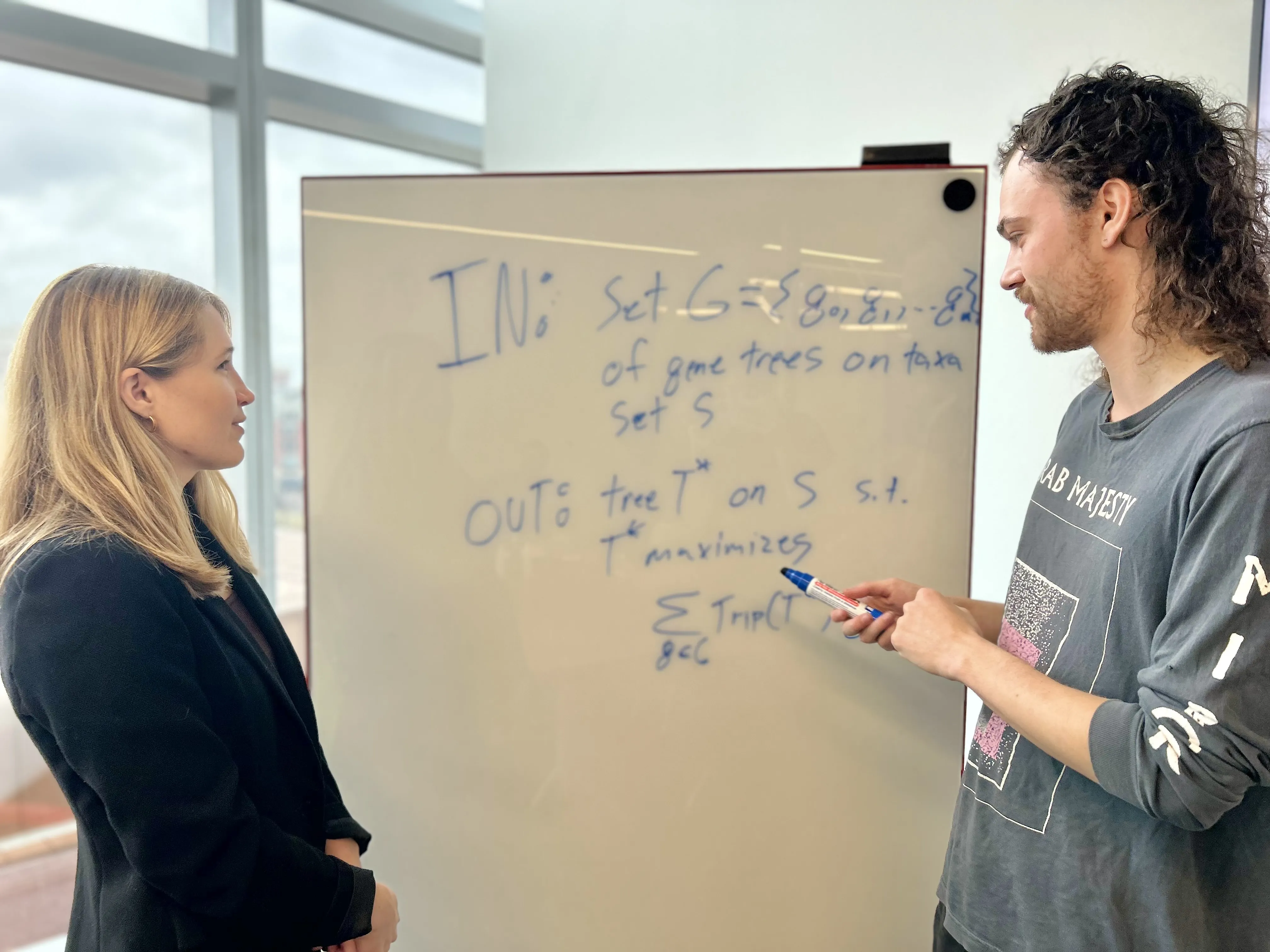
A University of Maryland computer scientist has been awarded funding from the National Science Foundation (NSF) to develop innovative computational tools that advance the emerging field of retrophylogenomics, which uses “copy-and-paste” DNA sequences called retrotransposons to better understand how species are related and how they have evolved over time.
Erin Molloy, an assistant professor of computer science with an appointment in the University of Maryland Institute for Advanced Computer Studies, is principal investigator on the NSF Faculty Early Career Development Program (CAREER) award, totaling almost $600,000 over the next five years.
This highly competitive award—one of NSF’s most prestigious funding mechanisms for early-career faculty—recognizes researchers with the potential to serve as academic role models in both research and education and to lead transformative advances in their fields.
Molloy’s research aims to unravel the complexities of retrotransposons—mobile DNA elements that copy-paste themselves around the genome. Retrotransposons can significantly shape genome structure, and the specific ways they appear or seemingly disappear across species serve as powerful markers for tracing evolutionary history. Although these sequences are abundant in vertebrate genomes, their repetitive and dynamic nature has made them historically difficult to analyze at a genome-wide scale.
To address this, Molloy is developing biologically accurate models for retrotransposon evolution, along with scalable open-source software tools that can automatically identify retrotransposon variants and infer evolutionary relationships.
“This project is about unlocking the potential of retrotransposons to study species and genome evolution,” says Molloy, who is also a member of the Center for Bioinformatics and Computational Biology. “This goal is within reach, thanks to major advancements in DNA sequencing technologies and genome assembly from just the last few years. By developing scalable computational tools grounded in realistic models, we aim to make these markers accessible to the broader scientific community and shed light on parts of evolutionary history that have remained unresolved despite significant efforts.”
The project will support the largest genome-wide analysis of retrotransposon insertions and reconstructed evolutionary histories to date, leveraging recent breakthroughs in high-fidelity genome assemblies.
A key element is bridging statistical rigor with scalable computation to overcome the limitations of current methods. The research will also draw upon and contribute to the fields of uncertainty prediction and multi-scale data integration.
In addition to the scientific research, the project will provide learning opportunities for both graduate and undergraduate students. Molloy plans to develop new course materials on algorithms for high-fidelity genome assemblies, along with outreach efforts to engage middle and high school students in computing, data science, and biology.
Two computer science Ph.D. students in Molloy’s lab—Yunheng Han, who recently defended his thesis and is graduating this summer, and Rachel Parsons, now entering her third year—contributed key preliminary data for the grant. The award will support Parsons’s dissertation research and provide summer research and training opportunities for other students.
In receiving the NSF award, Molloy acknowledges several collaborators, including Mark Springer of the University of California Irvine and John Gatesy of the American Museum of Natural History, who introduced her to retrophylogenomics during her Ph.D. studies at the University of Illinois at Urbana-Champaign. Since joining UMD, she has worked closely with retrotransposon experts including Jessica Storer and Rachel O'Neill at the University of Connecticut as well as David Ray and Francisco Castellanos at Texas Tech University.
—Story by Melissa Brachfeld, UMIACS communications group
***
“Multi-scale Retrophylogenomics- From Theory to Practice” is supported by NSF grant #2441458 from the NSF’s Division of Information and Intelligent Systems
PI: Erin Molloy, an assistant professor of computer science with an appointment in the University of Maryland Institute for Advanced Computer Studies.
About the CAREER award: The Faculty Early Career Development (CAREER) Program is an NSF activity that offers the foundation’s most prestigious awards in support of junior faculty who exemplify the role of teacher-scholars through outstanding research, excellent education and the integration of education and research within the context of the mission of their organization.